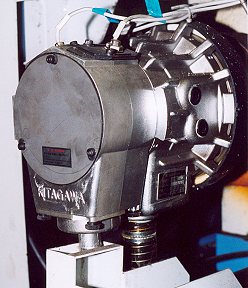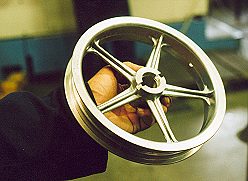|
|
 |
|||||||||
|
|
FAQs Why Casting? Casting offers the designer the opportunity to achieve near net shape solutions to a huge variety of problems, in a wide range of materials, in quantities from one to millions, and in sizes from tiny, for example a tooth on a zip fastener, to 280 tonnes, the largest casting made in the UK Why Aluminium? Aluminium's advantages may be summarised as lightness, rapid machinability, corrosion resistance and suitability for volume manufacture. Iron and aluminium are the commonest elements found in the Earth's crust, and are the two most widely used metals for casting. Although the history of casting dates back 4000 years to the Chinese,the development of cast iron by lord Derby in the mid -18th century signaled the advent of the Industrial Revolution, allowing rapid advances in engineering to be made. Aluminium was regarded as a precious metal until the turn of this century. But this 150 year headstart is rapidly being eroded as Aluminium`s advantages become more widely recognised. Why gravity die-casting? For low volume, very large or very complicated castings, sand casting is the usual route, where a pattern is (relatively) cheap, but the casting is expensive. For very high volumes pressure die-casting is the answer, as high tooling costs are offset by much lower unit costs. Gravity die-casting falls in the middle ground where tooling is not prohibitively expensive, but savings on casting costs can bring the break-even point down to as low as 200 units. Why Skaigh? This break-even point is further reduced at Skaigh as we provide tooling at cost price in house. Tooling can also be made from customer's own files. Heat-treatment is carried out on site, and we have recently invested in a state-of-the-art machine shop to machine our own castings. |
Powered Wheelchair Wheel |
||||||||
|
Tel: +44 (0)1626 852159 - Fax: +44 (0)1626 853495 |
||||||||||




